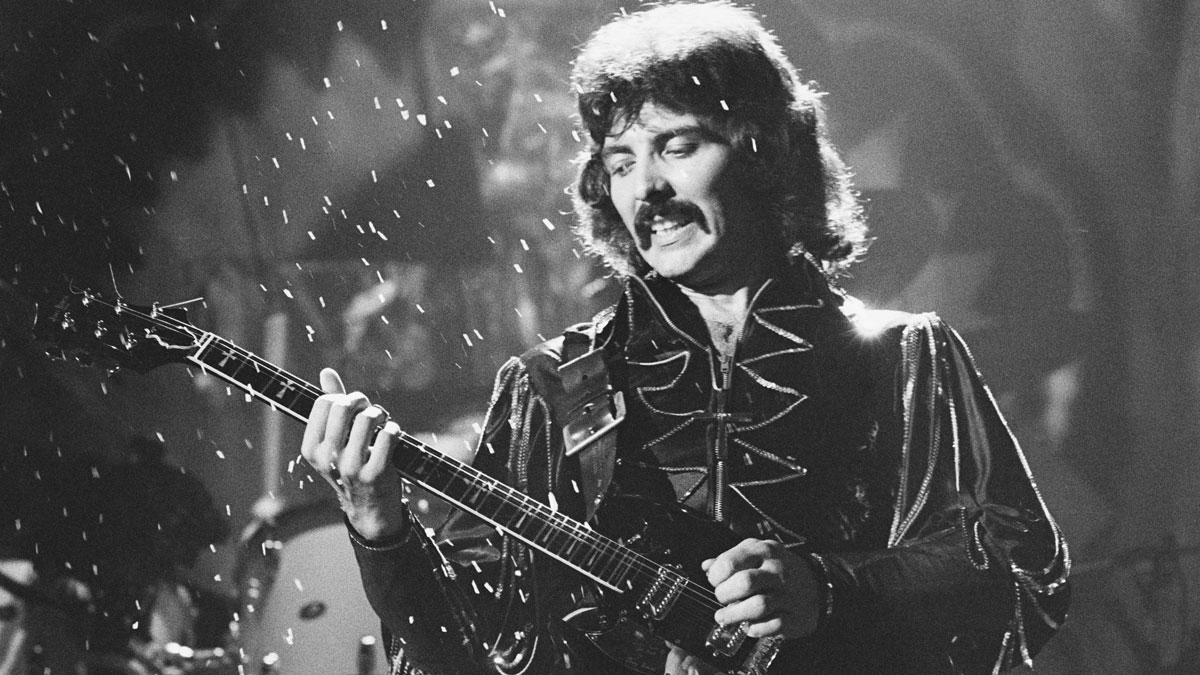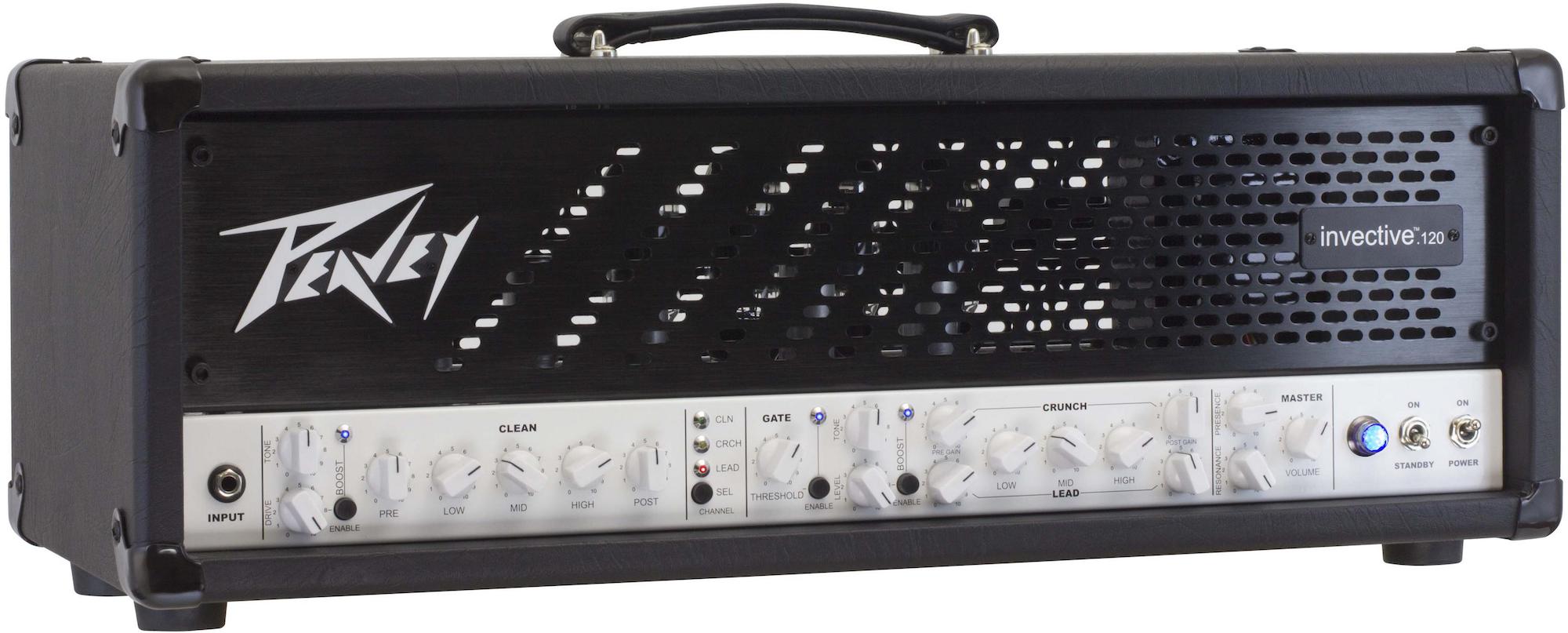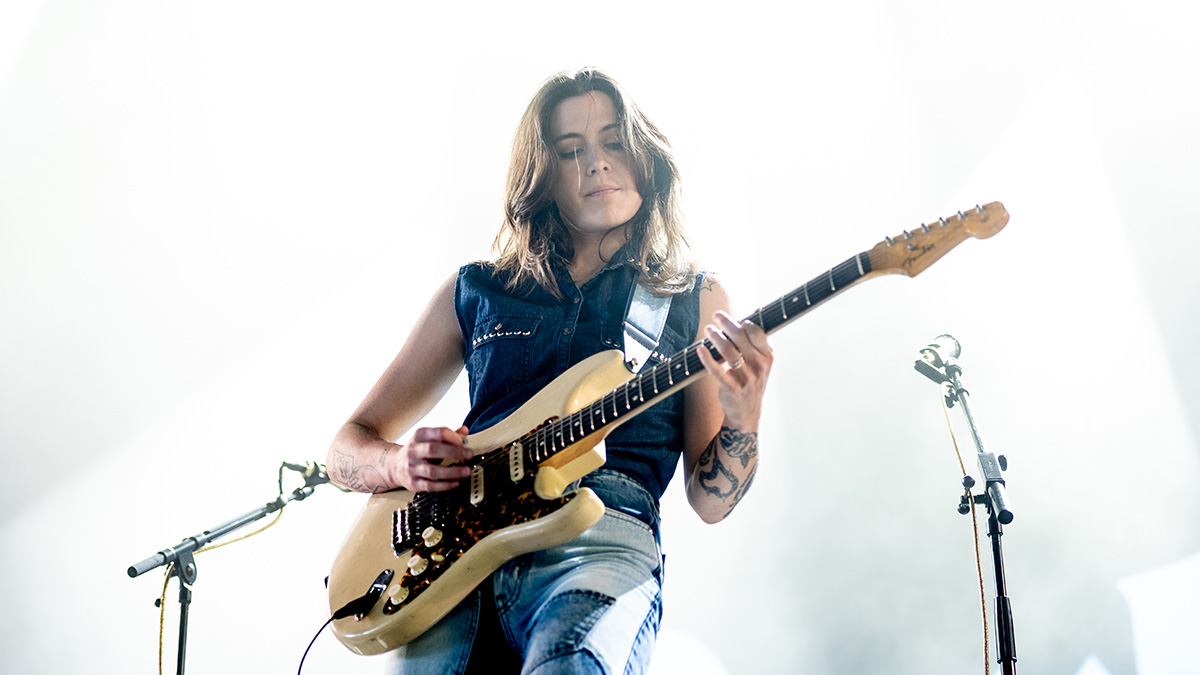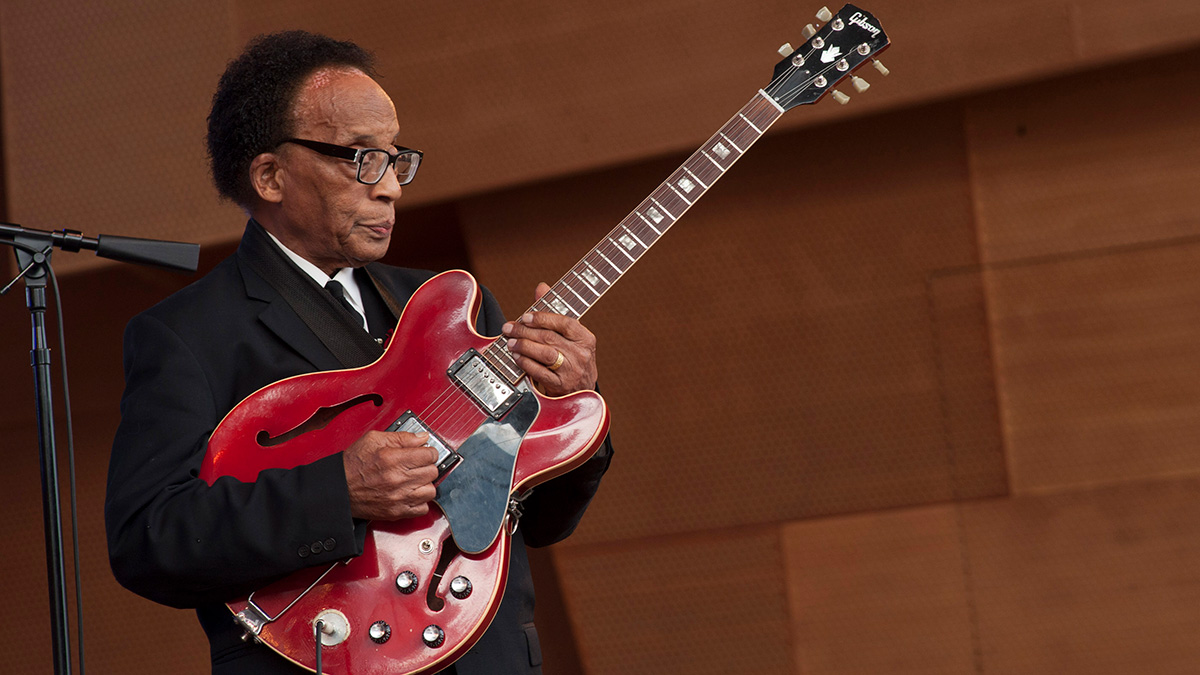The 25 greatest metal guitar tones of all time
We chart the rise of heavy guitar tones, from Sabbath to stoner, Swe-death to djent, thrash to doom…

Best of 2019: What we talk about when we talk about heavy metal guitar tone was first defined in 1970 when Black Sabbath and Tony Iommi set rock down a darker path. But the warnings had already been sounded as the ‘60s ran out of free love.
In 1968, Blue Cheer’s Summertime Blues set a new extreme for guitar tone. Same year, heavier still, with a darker significance post-Manson Family murders, was the Beatles’ Helter Skelter. Guitar tone was heading one way. Iommi gave it the push.
What came next was an arm’s race for more gain, the lifesblood of metal tone. In the 1970s, most guitar amplifiers lacked a master volume. Finding gain involved high volume and various boosters to drive the tubes harder. Treble boosters such as the Arbiter-Dallas Rangemaster gave guitarists such as Iommi, Judas Priest’s KK Downing and Glenn Tipton, and Ritchie Blackmore extra juice.

• The 10 best amps for metal
• Best electric guitars for metal
• The best 7-string guitars
By ’81, Marshall’s Master Volume series had morphed into the hugely popular JCM800. The game changed again. Guitar design similarly evolved, with higher-output pickups and more aggressive tones becoming the default choice for those playing metal.
This list collects metal tones from across metal’s broad church. There are omissions. Where do you put Alice in Chains when they resist metal at every turn? Jerry Cantrell’s tone should be definitely mentioned. No Tool, either; they could be prog. No Iron Maiden? Yes, awesome band, great tone, but no. Sorry. And no doubling up -sorry, Metallica’s …And Justice for All tone!
In no particular order, these 25 tones showcase the power of a distorted electric guitar, used in different contexts by very different metal players. Hyper-distorted death metal necroticism, EL34 crunch, fuzzed out doom, fuzzed-out drone, djent chug, super-aggro thrash, rectified gain filth... and it all starts with Iommi.
1. Black Sabbath - Master of Reality (1971)
Guitarist: Tony Iommi
Get The Pick Newsletter
All the latest guitar news, interviews, lessons, reviews, deals and more, direct to your inbox!
Tony Iommi recalibrated his tone on Master of Reality and found an ever-more morbid key to play in.
Tuning down to C# could have been read as a practical measure to reduce string tension and compensate for the factory injury in which he lost his fingertips, but it lent tracks such as Children of the Grave an unparalleled weight.
A Gibson SG played through a Laney Supergroup Mk 1, mids and treble maxed, with a Dallas Rangemaster somewhere in the mix, helped dial in the heaviest tone in metal.
2. Slayer - Reign in Blood (1986)
Guitarists: Jeff Hanneman, Kerry King
In the company of producer Rick Rubin, the Huntington Park, CA, quartet really hit their straps on album number three, stripping away the reverb to keep their thrash sound raw ’n’ bloody.
That let the arrangements be evil on their own terms. Reign in Blood is a Marshall JCM800 record, with a 10-band Boss EQ pedal to dial in more midrange punch, while both King and Hanneman were playing BC Rich. They never sounded better.
3. Metallica - Kill ‘em All (1983)
Guitarists: Kirk Hammett, James Hetfield
They say talent borrows and genius steals, and legend has it that it was the ‘tallica boys’ genius to copy Trouble’s Bruce Franklin and Rick Wartell tone for their incendiary debut. Wartell himself disputes this.
Hetfield’s pure thrash crunch comes courtesy of a hot-rodded Marshall 1959 Super Lead and a Pro Co RAT distortion pedal, giving Kill ‘em All a feral energy.
Both guitarists were playing Gibson Flying Vs, with Hammett using an Ibanez Tube Screamer and his trademark wah on leads. It’s just so crunchy... Jagga-jagga-jagga catnip for heshers.
4. Entombed - Left Hand Path (1990)
Guitarists: Uffe Cederlund, Alex Hellid
Probably the most copied tone in metal, the Studio Sunlight tone typified Stockholm’s buzz-saw death metal sound. It has been credited to the late Leif 'Leffe' Cuzner of Nihilist, which later morphed into Entombed, though Cederlund credits producer Tomas Skogsberg.
Here, Cederlund, on a cheap Ibanez, and Hellid both tuned down to B, dimed a Boss HM-2 in front of a similarly dimed solid-state Peavey Studio Pro 40-watt combo to create the acme of decomposed death-metal tone.
5. Meshuggah - Chaosphere (1998)
Guitarists: Mårtin Hagström, Fredrik Thordendal
Tuning Ibanez Universe seven-string electrics half a step down and running them through Mesa/Boogie Dual Rectifiers, and then through a byzantine signal path, Meshuggah were the engineers to the djent scene’s xenomorph - progenitors of alien, post-human metal tone.
The levels of gain are unearthly. Thorderndal and Hagström dipped their pickups in wax to keep feedback at bay. Back then they were heavy users of TC Electronic’s preamps, linedriver, overdrive, stereo chorus, and EQ. The secret sauce? Probably arrived on Earth via meteorite.
6. Baroness - Blue Record (2009)
Guitarists: John Baizley, Pete Adams
Now to something more life-affirming. Cooked up through a cornucopia of boutique amps and effects, Baizley and Adams’ Blue Record tone would lift any gearhound’s spirits.
Adams was running a custom double-cut First Act and Les Paul Classic though a Bad Cat Hot Cat. Baizley was using a Bad Cat Lynx with guitars including a custom First Act single-cut.
In the studio, it was effects galore, with an EHX HOG, Retro-Sonic chorus, and Moog Moogerfooger getting airtime. Both were fans of the Fulltone OCD overdrive, and these judicious pedal choices help make Baroness’ big riffs and twin-guitar melodies so lush.
7. Pantera - A Vulgar Display of Power (1992)
Guitarist: Dimebag Darrell
An unforgiving scooped chainsaw tone, Dimebag’s rhythm sound was like nothing we had ever heard before. No mids, no valve-amp heat here, thanks.
This was a Dean ML with a Bill Lawrence XL 500 humbucker in the bridge, a Seymour Duncan ’59 in the neck, going into a solid-state Randall Century 200 via a Furman PQ-4 parametric EQ, a MXR Flanger/Doubler, and the all-important Rocktron Hush noise gate lest any unwanted hum detract from the focused brutality.
8. Rainbow - Rising (1976)
Guitarist: Ritchie Blackmore
You could make a case that the Man in Black’s tone skews more classic rock, with his Strat, Marshall Plexi and Hornby Skewes treble booster setup, but the way he applied it on Rising - a precursor to power metal - was wholly metal.
That Marshall mid-high crunch is so present, transparent gain pumped up by that treble booster, and then there was Blackmore himself, his unmistakable playing constructing a world of neoclassical mysticism and wonder. Magical.
9. Sleep - Dopesmoker (2003)
Guitarist: Matt Pike
You might need to dose your bloodstream with medicinal THC to fully recreate the reefer madness vibe going on in Sleep’s seminal stoner epic Dopesmoker, for Sleep famously spent their major label advance on weed and $75,000 worth of gear.
Matt Pike was playing a Les Paul through a custom Green Matamp throughout and producer Billy Anderson was a willing enabler, encouraging ever more layers of guitar, creating not so much a wall of sound but a new dimension.
10. Ozzy Osbourne - Diary of a Madman (1981)
Guitarist: Randy Rhoads
This is Friday Night Metal Tone. Just hearing it makes you feel like it's the first Friday evening at the start of the summer.
Rhoads' rig saw him alternate between a prototype Jackson 'Concorde' Vs, custom Karl Sandoval polka-dot V or 1974 cream Les Paul Custom, and running his guitar through two Marshall Super Leads in stereo, with a Dunlop wah and a variety of MXR effects - distortion, stereo chorus, flanger, echo, and 10-band EQ - for extra juice.
11. Judas Priest - Screaming for Vengeance (1982)
Guitarists: KK Downing, Glenn Tipton
The best twin-guitar duo in metal history typically ran Gibson guitars through 50 and 100-watt Marshalls, with Downing using a V and Tipton an SG.
With no master volume on their Marshalls they really cranked them, and Downing says they tried everything to get more gain.
Peter Cornish was a tone ally. His TB-83 treble boost and SS-2 Cornish boost/overdrive would have joined various MXR modulation pedals and delays in Ibiza Studios as they tracked this 100 per cent pure expression of British steel.
12. Immortal - At the Heart of Winter (1997)
Guitarist: Abbath Doom Occulta
Producer Peter Tätgtren wanted to recreate the Pure Holocaust rhythm tone. Abbath demurred. He has never been happy with Pytten’s production on the record, and disliked the Mesa/Boogies they had used back then, but Tätgtren was onto something.
Abbath tracked with bassist Demonaz’s modded GHL Jackson V running into a Boogie for a treble-forward, gnarly tone, and when Tätgtren suggested using a five-string bass for added thunder and weight, Immortal’s majestic, sub-zero power was finally captured on record.
13. Melvins - Bullhead (1991)
Guitarist: Buzz Osborne
The squalls of low-end fuzz thunder on Bullhead famously inspired the Japanese drone/avant-rock band Boris, and Osborne’s tone would cast its influence far ’n’ wide across sludge and doom scenes.
Osborne was using Gibson Les Paul Customs then- the devil’s head-stickered LP made the liner notes. Amp-wise, maybe a Sunn Beta Lead or Marshall, and this would be recording live to a 16-track, then tracked again and layered, maybe with octave fuzz and distortion, to further thicken the tone.
14. Obituary - Cause of Death (1990)
Guitarists: Trevor Peres, James Murphy
Obituary took Florida death metal in their own doomy fuzz direction when others were looking to aggression and speed.
Trevor Peres’ Obituary rig is super-simple; a Fender Stratocaster Deluxe with a humbucker in the bridge and floating Floyd Rose double-locking tremolo for those spectral harmonic squeals, a Marshall JCM800 through a full stack and the hard-clipped fuzzy gain of a Pro Co RAT distortion pedal. James Murphy probably had a similar rig but used BC Rich back then.
15. Devil Master - Satan Spits on the Children of Light (2019)
Guitarists: Johnathan Hades, Francis O’Kane
Inspired by ‘80s post-punk and Japanese hardcore, Hades and O’Kane do for black-metal guitar tone what East Bay Ray did for punk’s.
Their tone is an audiophile’s nightmare, a riot of reverb, upper-midrange and highs, and weird modulation, and it is perfect. Producer Arthur Rizk somehow captured its essence on tape.
Hades and O’Kane use B.C. Rich and Schecters as they chase melodies that are pure midnight B-horror and combustible danger.
16. Danzig - Danzig (1998)
Guitarist: John Christ
John Christ does not get enough credit as the Evil Elvis’s very own Scotty Moore. No-one can play that oh-so-louche bluesy, metal style quite like him.
Christ’s main guitar here was an ’83 B.C. Rich Bich with PRS pickups replacing the stock DiMarzio’s.
Another Rick Rubin production, drier than Death Valley, we’re not sure of the amp on this one - maybe a VHT Pitbull? - but surely it’d have Christ’s trusty Boss GE-7 EQ in front of it.
17. Celtic Frost - Monotheist (2006)
Guitarist: Tom G Warrior
Of course a guitarist’s tone is in their fingers. We all know that, and believe it, but in our quiet moments get to thinking: the gear must do some of the heavy lifting. Tom G Warrior reaffirms our faith that it is the player, and their songwriting, too.
There isn’t a whole lot going on rig-wise. Essentially it's his Ibanez Iceman, a Tube Screamer and a Marshall JCM800. Here he is tuned way down, and it’s devastating.
18. Periphery - Periphery IV: Hail Stan (2019)
Guitarists: Misha Mansoor, Jake Bowen, Mark Holcomb
While the alien DNA in Periphery’s complex rhythms could be traced back to Meshuggah, here is a band who have fast evolved in real-time - a process accelerated by Fractal Axe-Fx units, extended-range guitars, and the musical possibilities thereof.
Surprisingly, there's not that much gain in their chug. Just enough. Guitar-wise, both Mansoor uses his Jackson signature seven-string loaded with Bare Knuckle pickups, while Bowen has his Ibanez JBM100 signature with DiMarzio Titan humbuckers, and Holcomb his PRS signature with Seymour Duncan Alpha and Omega pickups - and they like to share them.
19. Lamb of God - Sacrament (2006)
Guitarists: Mark Morton, Willie Adler
This is the modern American metal tone par excellence. It’s jacked up with layers of gain, is harmonically volatile, and at that time would have seen Morton on his Jackson Dominion and Adler with an ESP Eclipse trading blows on their Mesa/Boogie amps.
A Stilletto Deuce was used somewhere here but Morton was always a Mark IV man, with Adler taking a Roadster on tour after Sacrament. Gene Freeman, aka Machine, captured it raw and nasty.
20. Gojira - L’Enfant Sauvage (2012)
Guitarists: Joe Duplantier, Christian Andreu
When Gojira debuted their rhythm-forward kinetic sound, they confused everyone. Was this the next-gen Meshuggah? Was this the future of death metal? Wrong on both counts. Just how did they get those crazy effects, the squeals? Was that an effect? No.
By time L’Enfant Sauvage was released, we knew it was the playing. It was just Duplantier with his signature Charvel or Jackson SLS, and Andreu with a Jackson Rhoads V going into high-gain EVH lead heads. Their technique brought the magic.
21. Sunn O))) - Life Metal (2019)
Guitarists: Stephen O’Malley, Greg Anderson
Sunn O))) tracked Life Metal to tape in the company of Steve Albini in what was once again an exercise in the artistic potential of the guitar amplifier, of volume and gain. There were Sunn Model T’s, the older the better, but also some Fender combos.
Guitars-wise, Anderson had his LP Gold Top with Dimarzio Super Distortion P-90s -O’Malley, his koa Travis Bean. And then crates of effects pedals, notably a RAT distortion with Keeley mod for O’Malley, LM308-modded RAT for Anderson, recreated in their signature EarthQuaker Devices Life Pedal.
22. Vastum - Hole Below (2015)
Guitarist: Leila Abdul-Rauf
Vastum hew close to death metal’s early principles with a primal sound assembled around Abdul-Rauf’s carnivorous rhythm tone.
Abdul-Rauf plays in all kinds of projects, has chops to burn, but she keeps it Cro-Magnon with Vastum - tuning her BC Rich Mockingbird down to B standard, running it through Channel 3 of a Mesa/Boogie Triple Recitifier, gain and presence dimed, pushing foul air through a Marshall 4x12 1960A&B 300-watt stack.
23. Mastodon - The Hunter (2011)
Guitarists: Brent Hinds, Bill Kelliher
After the long-form prog of Crack the Skye, Hinds and Kelliher favored simpler arrangements for The Hunter, confining experimentation to the pedalboard. Like on Curl of the Burl, where Hinds broke out a Morpheus DropTune pedal for an awesome octave-down effect.
Kelliher mostly tracked with a ’74 Les Paul Custom. Hinds was using a ’76 Marshall 100-watt JMP Mark II Lead Series and his Acrylic V from the Electrical Guitar Company. A Monster Effects Mastortion, Dunlop Jimi Hendrix Octavio, Ibanez Tube Screamer and many others joined in the fun.
24. Deftones - Diamond Eyes (2010)
Guitarist: Stephen Carpenter
Carpenter’s tone mines super-low frequencies, loud/quiet dynamics and staccato rhythmic nihilism, but unlike nu-metal, he lets it dissolve and move through altogether more interesting arrangements, shoegaze melodies and clouds of saturated low-end.
On Diamond Eyes, he is running his signature ESP eight-string in standard tuning into a Marshall JMP-1 preamp and an EL34 power amp, which is driving two sets of cabinets, one with 75-watt speakers, the other with 80-watt Celestions. He didn’t use many effects on this, some from from MXR, Z.Vex, and his trusty Rocktron Intelliflex multi-effects unit.
25. Enslaved - Ruun (2006)
Guitarists: Ivar Bjørnson, Ice Dale
While their progressive sensibilities would accelerate after 2008’s Vertebrae, Enslaved’s expansive vision for black metal had been evident early on. And on Isa (2004) and Ruun, they married the fury of black metal to physicality and weight that had hitherto been alien to the scene.
Bjørnson used a Gibson SG, Ice Dale a Les Paul Custom or Flying V, and these would be run through Peavey heads for high-gain, cold-crunch treble - an animalistic and raw tone to contrast Herbrand Larsen’s vocals and keys.
Jonathan Horsley has been writing about guitars since 2005, playing them since 1990, and regularly contributes to publications including Guitar World, MusicRadar and Total Guitar. He uses Jazz III nylon picks, 10s during the week, 9s at the weekend, and shamefully still struggles with rhythm figure one of Van Halen’s Panama.











